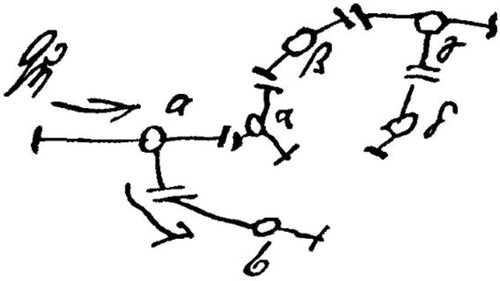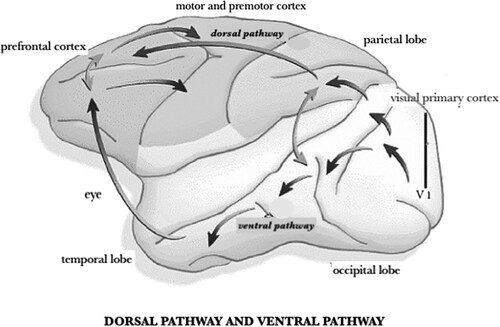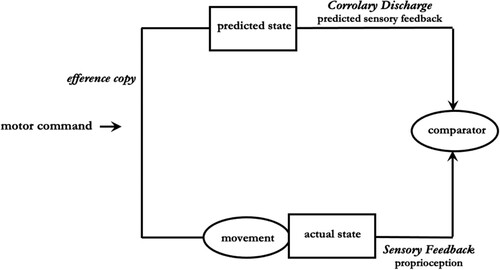Figures & data
Figure 1. The difference between the primary and the secondary functioning of Freud’s neuronal apparatus (explanation see text).

Figure 2. The ventral pathway, leading to the temporal lobe, is the “What?”-pathway where basic visual attributes – such as contours, shape, texture, color etc. – of an object are assembled. It is then also the pathway where these separable elements or attributes can lead to the perceptual identification of an object, in much the same way as Freud proposed for the primary process. The dorsal pathway, leading to the parietal lobe, is the “Where?”-pathway where action plans are spatiotemporally elaborated, in much the same way as Freud proposed for the secondary process.

Figure 3. The efference copy model. This computational model proposes that upon motor intention, copies of the efferent motor command are fed back and used centrally in an emulation algorithm, which calculates the predicted somatosensory changes expected as a consequence of the prescribed motor execution. Upon effective execution, peripheral changes at the muscles, the joints and the skin generate an actual proprioceptive feedback, which will (more or less) balance out the predicted sensory feedback in the parietal somatosensory cortex at the level of a so-called “comparator.”

